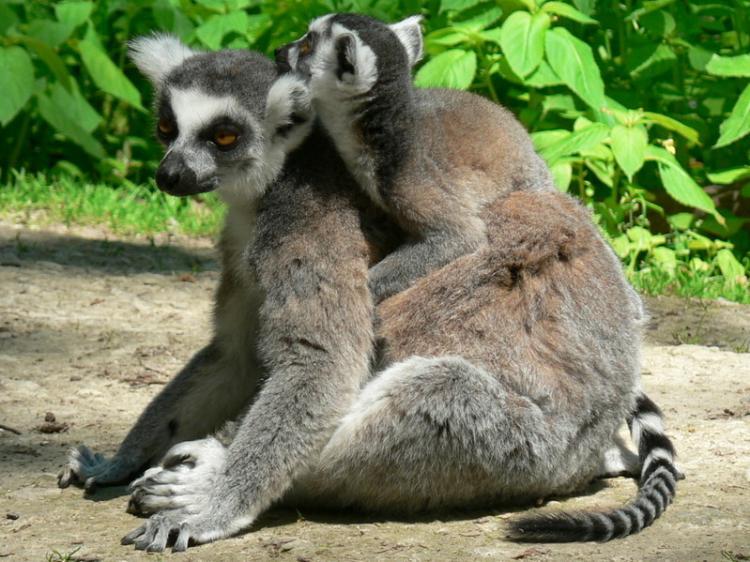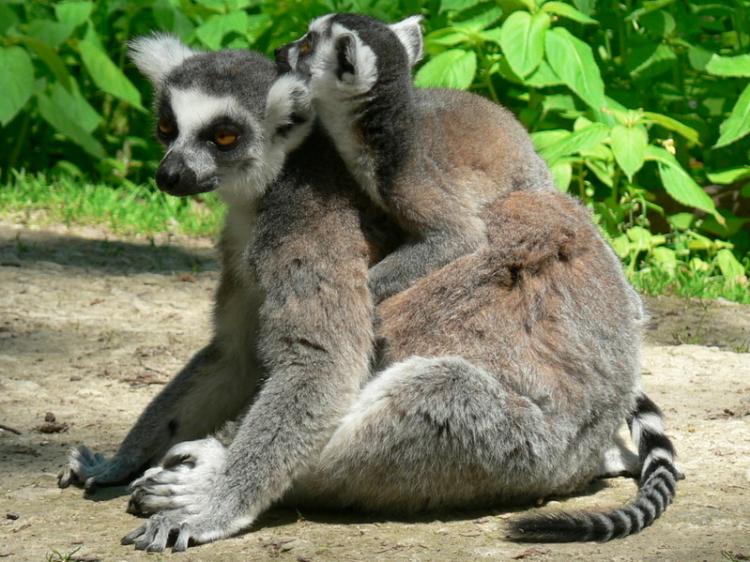Logging in Madagascar, an island nation off Africa’s southeast coast, endangers ancient animal and plants species, notably lemurs, primates only found in this region.
Many of us have seen lemurs—that old phylum of simians—in a zoo. There are more than thirty species of lemurs in Madagascar, including the greater bamboo lemur (Prolemur simus), the white-collared lemur (Eulemur albocollaris), and Perrier’s sifaka (Propithecus perrieri).
Over the past 1,500 years, more than 16 lemur species have become extinct. Environmentalists say this is mainly due to habitat destruction, but some lemurs have also been traditionally killed outright by local people. Lemur legends abound, for example one about the Aye-Aye, whose long, bony middle finger picks insect larvae from logs. Legend has it that if an Aye-aye points it’s bony finger at a person, that person will die. This has led to locals killing this animal on sight.
Depending on the type, lemurs alive today can be between 5 and 30 inches tall. Yet just a few hundred years ago, there were lemurs such as Megaladapis weighing in at an estimated 150 pounds. These, easy prey for humans, were hunted to extinction and now exist only as bones in the ground.
Many lemurs are active at night. The people of Madagascar reverently call them “forest spirits.” The few among us who have been in their presence in the jungle can relate to that designation as their screams and calls during the night have an eerie quality. Aiming one’s flashlight into the treetops brings glowing red and yellow pairs of eyes into view.






